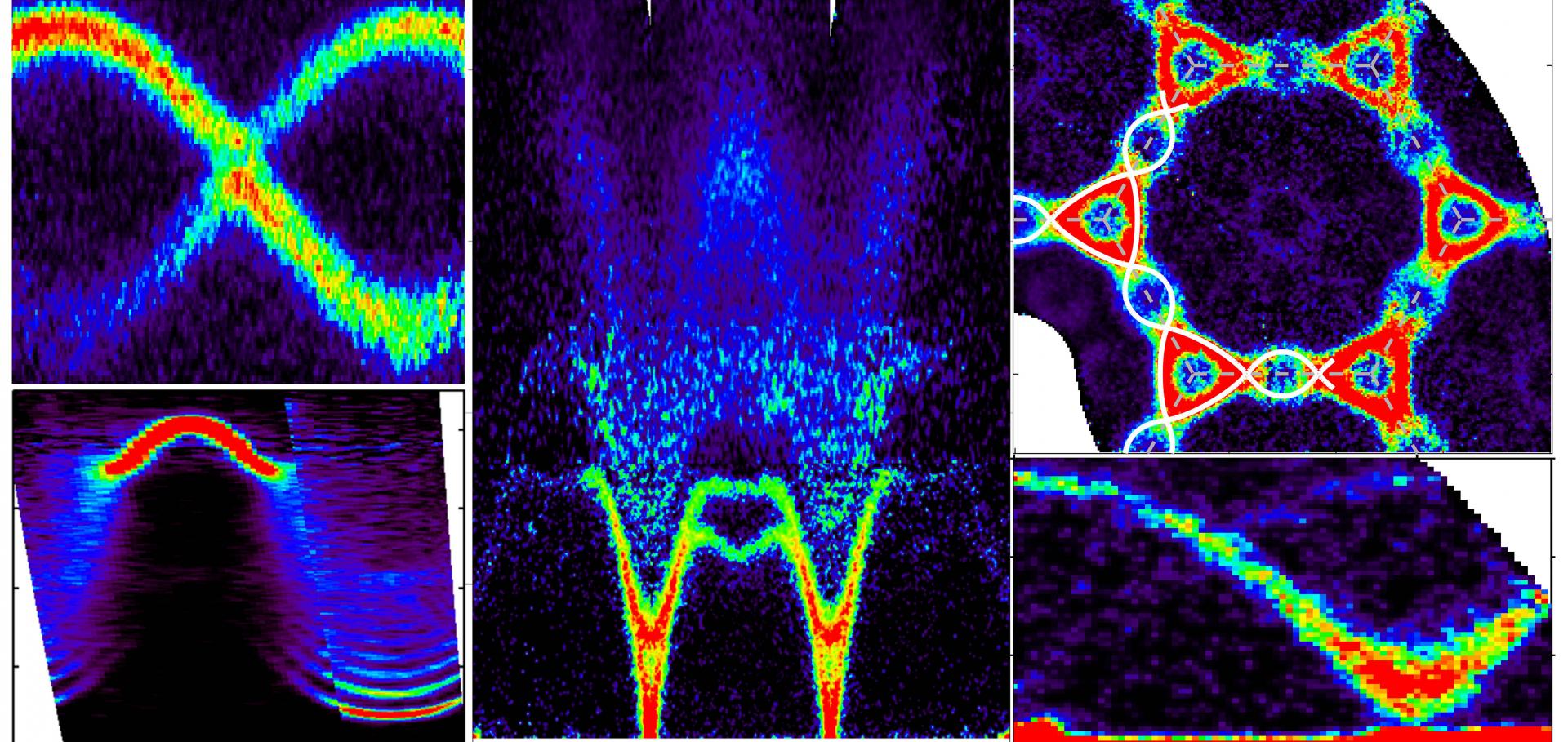Origin of the insulating state in the honeycomb iridate Cu2IrO3
Abstract:
Through a combination of crystal symmetry analysis and density functional theory calculations we unveil a possible microscopic origin of the unexpected insulating behavior reported in the honeycomb Kitaev material Cu2IrO3. Our study suggests that this material hosts an instability towards charge ordering of the Ir ions, with alternating magnetic Ir4+ and nonmagnetic Ir3+ ions arranged on the honeycomb lattice. In this case, the next-nearest-neighbor interactions that couple magnetic Ir4+ ions form an enlarged triangular lattice, instead of the expected honeycomb lattice. The magnetic Cu2+ ions located at the center of the iridium honeycomb voids also form a triangular lattice, and additionally contribute to the magnetization of the system. Together, the interpenetrated Ir4+ and Cu2+ triangular lattices present a novel type of honeycomb Kitaev lattice composed of two types of magnetic ion.From continuum excitations to sharp magnons via transverse magnetic field in the spin-1/2 Ising-like triangular lattice antiferromagnet Na2BaCo(PO4)2
Compass-model physics on the hyperhoneycomb lattice in the extreme spin-orbit regime
Abstract:
The physics of spin-orbit entangled magnetic moments of 4d and 5d transition metal ions on a honeycomb lattice has been much explored in search for unconventional magnetic orders or quantum spin liquids expected for compass spin models, where different bonds in the lattice favour different orientations for the magnetic moments. Realizing such physics with rare-earth ions is a promising route to achieve exotic ground states in the extreme spin orbit limit, however this regime has remained experimentally largely unexplored due to major challenges in materials synthesis. Here we report successful synthesis of powders and single crystals of β-Na2PrO3, with Pr^{4+} j_eff = 1/2 magnetic moments arranged on a hyperhoneycomb lattice with the same threefold coordination as the planar honeycomb. We find a strongly noncollinear magnetic order with highly dispersive gapped excitations that we argue arise from frustration between bond-dependent, anisotropic off-diagonal exchanges, a compass quantum spin model not explored experimentally so far. Our results show that rare-earth ions on threefold coordinated lattices offer a platform for the exploration of quantum compass spin models in the extreme spin orbit regime, with qualitatively distinct physics from that of 4d and 5d Kitaev materials.Anisotropy of the zigzag order in the Kitaev honeycomb magnet α-RuBr3
Abstract:
Kitaev materials often order magnetically at low temperatures due to the presence of non-Kitaev interactions. Torque magnetometry is a very sensitive technique for probing the magnetic anisotropy, which is critical in understanding the magnetic ground state. In this work, we report detailed single-crystal torque measurements in the proposed Kitaev candidate honeycomb magnet α-RuBr3, which displays zigzag order below 34 K. Based on angular-dependent torque studies in magnetic fields up to 16 T rotated in the plane normal to the honeycomb layers, we find an easy-plane anisotropy with a temperature dependence of the torque amplitude following closely the behaviour of the powder magnetic susceptibility. The torque for field rotated in the honeycomb plane has a clear six-fold periodicity with a saw-tooth shape, reflecting the three-fold symmetry of the crystal structure and stabilization of different zigzag domains depending on the field orientation, with a torque amplitude that follows an order parameter form inside the zigzag phase. By comparing experimental data with theoretical calculations we highlight the importance of relevant anisotropic interactions and the role of the competition between different zigzag domains in this candidate Kitaev magnet.


